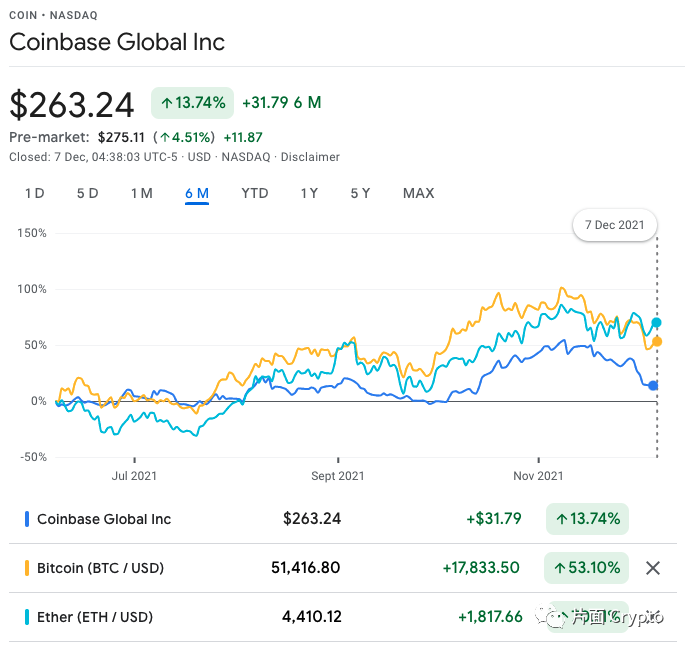Author: Wayne
Let’s talk about Coinbase Cloud and Alchemy today, both of which belong to the infrastructure track of Web3.0. Today's content may not have much discussion. It is more about introducing some situations and understanding what these two companies want to do and what their vision is. The vision of the companies at the forefront may be the future we will see.
image description
Coinbase Cloud

Brian Armstrong,Founder of Coinbase, photographed for Forbes by Jamel Toppin in January 2020
The emergence of Coinbase Cloud may largely be due to the pressure from investors after the listing. Coinbase, as the largest Crypto exchange in the United States, like all exchanges, almost all of its income comes from transaction fees. Of course, non-U.S.-compliant exchanges have currency listing fees in addition to handling fees.
The listing fee is generally high. When the price of bitcoin was still relatively low, two or three years ago, the listing fee of a second-tier exchange could reach 10-20 bitcoins, which was about 100,000-200,000 at that time. Dollar. According to rumors, the listing fees of first-tier exchanges can generally reach more than 3 million US dollars.
Of course, these exchanges will claim that they will not charge any listing fees.
When Coinbase was first listed, 97% of the company's highest profit came from transaction fee income. One result of this is that when the price of Bitcoin falls and then causes a downturn in the entire market, the market trading volume shrinks, and the transaction fee income of the exchange will naturally decline. This result was also reflected in Coinbase's financial report this year. The decline in trading volume in the third quarter led to a 44% drop in revenue (data from Forbes statistics).
image description

Google Finance (it's not even as good as Bitcoin, much less Ethereum)
In order to solve this problem, Coinbase began to vigorously develop other businesses from the second quarter. It is reflected in the financial report that the revenue of subscriptions and other services has continued to increase, especially in the third quarter when the fee income declined. Increase.
In January of this year, Coinbase acquired a company called Bison Trails. The company's business consists of four parts, namely:
Node service is to serve people with a lot of coins, help them to be nodes, and ensure the normal operation and maintenance of nodes
The protocol layer service is to provide services for people who want to interact with the public chain. Because the company itself has connected many chains, it can encapsulate a lot of data and interaction with the chain for developers to use.
Hosted node means that Bison Trails makes its own nodes, and other users with coins entrust them with coins
Data and API services, there is no need to explain this
According to the company's introduction, they currently support twenty or thirty public chains. Their most important job is to ensure the smooth operation of the nodes, which requires them to follow up the public chain frequently, and to be very close to the public chain to ensure that they know the development progress and upgrades of the public chain at the first time. The team also detailed their work on this part.
After Coinbase acquired Bison Trails, the two founders of the company have grown up smoothly and become the heads of Coinbae Cloud. The specific things they do are still the same, but there will be more support from Coinbase. Coinbase will definitely continue to install its hosting and node services into Coinbase Cloud in the future.
first level title
Alchemy
Alchemy is currently the largest Crypto cloud service provider and will be launched in August 2020. There are currently three rounds of public financing. The latest round, the C round, was in October this year. Investors include a16z, Lightspeed, Redpoing, Pantera, etc. The latest round was valued at $3.5 billion and raised a total of $250 million. Previous investors also include Jerry Yang, the founder of Yahoo, Stanford University, Coinbase, Reid Hoffman of LinkedIn, etc.
Compared with Bison Trails, Alchemy focuses more on helping the development of Web3 applications, without too much emphasis on node services (although there are). Products highlighted on its official website:
Supercharged Blockchain API: A node provides all services, helps developers develop applications, supports Ethereum, Ploygon, Arbitrum, Optimism, Flow, etc.
Powerful suite of developer tools: development assistance tools, a Dashboard
According to Techcrunch, current Alchemy clients include major NFT platforms: OpenSea, Nifty Gateway, SuperRare, CryptoPunks, Dapper Labs, Axie Infinity. There are also blockchain businesses done by traditional companies: Adobe, etc. At the same time, many DeFi applications also use Alchemy's services.
Alchemy's target is also the AWS business.
PC era
CPU GPU RAM ➡️ Windows & Apple ➡️ Local computer software Word
internet age
Various Internet Protocols ➡️ Cloud Service AWS ➡️ Internet Software
blockchain era
Layer 1 public chain ➡️ Alchemy / Coinbase Could ➡️ Web3 application
At present, Alchemy is operating very well, and the money from financing has basically not been moved, and the company has been in a very good state of profitability. The future goal is of course to work hard to promote the development of Web3 applications.
Although both Coinbase Cloud and Alchemy belong to infrastructure services, I prefer that they both belong to the middle layer, Middleware.
Developer - Application - User
Developer — Middleware — Application — MiddleWare — User
In the early stages of development, what we see is more that users directly reach applications, and developers also directly reach users through applications. However, with the development of the industry, the number of underlying Layer 1/Layer 2 carrying applications is increasing, and the number of applications themselves is also increasing, which may pose a big problem for both users and developers.
Just imagine an Internet world without Github and Google. As an entrance, Google can actually be understood as the middle layer between users and the information finally searched, the largest middle layer. It's just that with the continuous development of the industry/ecology, the amount of information on the terminal is increasing, so more and more intermediate layers are needed.
On the other side of the Crypto side, a wallet is a very typical middle layer that helps users reach applications. It’s just that in the initial stage, the wallet is really only reaching users without doing more services such as information screening/recommendation/categorization. In addition to general-purpose middle layers such as wallets, there will also be focused middle layers, such as providing privacy protection services; more detailed liquidity management tools; asset management tools and other middle layers.
Of course, these are very superficial ideas. Middleware plays a very important role in lowering the threshold, reaching more users and attracting more users.
This article is from one-sided Crypto, reproduced with authorization.
Author Twitter: https://twitter.com/0xwayne_z



